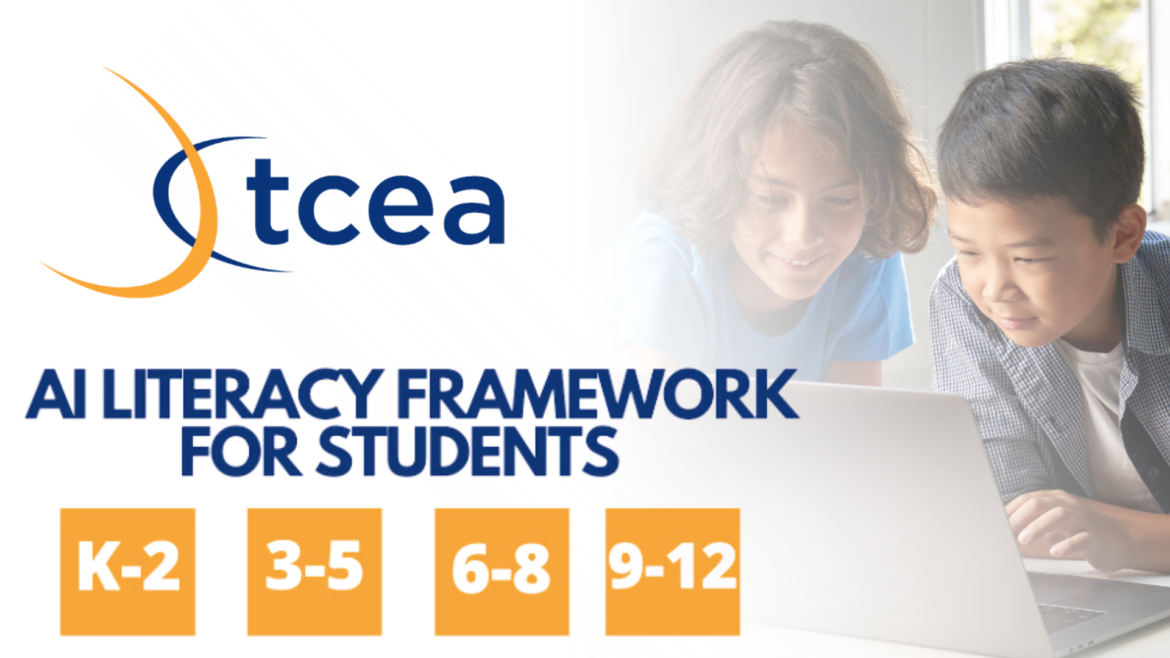Artificial Intelligence (AI) is transforming every aspect of our lives, from how we work and communicate to how we learn and solve problems. As educators, it’s crucial to prepare our students for the future where AI will play a central role. Just like the need years ago for instruction on how to use the internet and then how to master digital literacy skills, AI literacy is a critical component of a sound education today. That’s why I am thrilled to introduce the TCEA AI Literacy Framework for Students.
This comprehensive document is designed to equip students across all grade levels—K-2, 3-5, 6-8, and 9-12—with the knowledge and skills they need to understand and engage with AI safely and effectively. It provides learning opportunities across basic use, ethics, safety and privacy, and future impact.
The TCEA AI Literacy Framework is more than just a guide; it’s a roadmap to integrating AI concepts into your classroom in a meaningful and age-appropriate way. Whether you’re working with young learners in kindergarten or guiding high school students through complex AI projects, this framework offers tailored lesson plans that align with students’ cognitive development and curricular needs. By embracing this framework, you’re not just teaching students about AI; you’re empowering them to become critical thinkers, problem solvers, and innovators in a world increasingly driven by technology.
Tips for Implementing the TCEA AI Literacy Framework
- Start Early and Build Gradually: AI can seem like a complex topic, but with the right approach, even the youngest students can grasp the basics. Begin with simple concepts in the K-2 grade band, such as recognizing patterns and making predictions, and then build on these foundations as students progress through the grades. By the time they reach high school, they’ll be ready to tackle more advanced AI concepts, like machine learning and ethical considerations.
- Incorporate Real-World Examples: To make AI relevant and engaging for students, connect the lessons to real-world applications. For instance, when teaching about AI in the 6-8 grade band, you might discuss how AI is used in everyday tools like voice assistants or for creating recommendation algorithms on social media. This helps students see the practical implications of AI and understand its impact on their lives.
- Encourage Collaboration and Creativity: AI isn’t just about algorithms and data; it’s also about creativity and problem-solving. Use the framework to foster a collaborative learning environment where students work together to explore AI concepts. Encourage them to think creatively about how AI can be used to solve problems in their communities or to improve the world around them.
The TCEA AI Literacy Framework completely free and is your key to preparing students for a future where AI will be an integral part of their personal and professional lives. By integrating this framework into your teaching, you’re helping to shape the innovators and leaders of tomorrow. We invite you to explore the framework, experiment with the lesson plans, and join us in making AI literacy a cornerstone of education.


3 comments
This is amazing!
Thanks so much, Victoria. I’m glad you’ve found it helpful.
Love the guidelines. Thanks again TCEA!